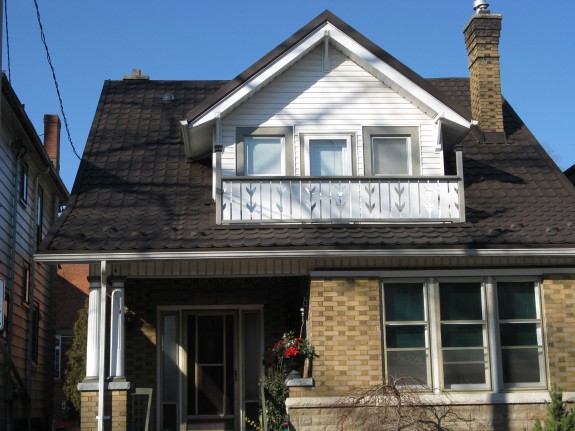 A steel roofing installation has to be constructed and installed in a specific way for it to be able to offer all the benefits that are commonly associated with this type of roofing, which is why it’s important to carefully select the roofing contractors you work with. Less reputable roofing contractors will cut corners at every opportunity in order to maximize the amount of money they collect from your project, which will affect both the roof’s performance and its lifespan. How exactly is a steel roofing installation put together though? What are the various components that combine to create the finished thing? Every team member at London Eco-Roof has an in-depth knowledge of these components and we are going to outline some of the main ones in this article today.
A steel roofing installation has to be constructed and installed in a specific way for it to be able to offer all the benefits that are commonly associated with this type of roofing, which is why it’s important to carefully select the roofing contractors you work with. Less reputable roofing contractors will cut corners at every opportunity in order to maximize the amount of money they collect from your project, which will affect both the roof’s performance and its lifespan. How exactly is a steel roofing installation put together though? What are the various components that combine to create the finished thing? Every team member at London Eco-Roof has an in-depth knowledge of these components and we are going to outline some of the main ones in this article today.
A Guide to the Core Components of a Steel Roofing Installation
Whether you are located in Toronto, Mississauga or any other part of the country, a steel roofing installation is a great option, both in terms of aesthetics and its ability to resist a range of different weather conditions. The fact that a steel roofing installation will also almost always outlast (we offer a 55 year warranty) traditional asphalt and concrete roofs is another reason why so many Canadian homeowners are having them installed. Some of the main parts of a steel roofing installation include:
Steel Roofing Substructure
Before a steel roof can be installed, the top surface of your property must be properly prepared with an appropriate substructure. The substructure’s role is to form a solid foundation on which the steel roof can be installed upon. It also adds another weatherproof layer that helps to prevent moisture from getting into your home, increases insulation and soundproofs your property. This substructure will typically be made up of an underlay, battens and ventilation strips.
Steel Roofing Surface Structure
- Roof Sheets/Panels/Tiles – Whatever you want to call them, the steel sheets/panels/tiles are by far the most visible elements of a steel roofing installation and form the first line of defence in protecting your home from rain, wind and snow. Due to their prominent position and the size of the roofing structure, they also play an important role in the aesthetics of your home.
- Valley Flashing – Valleys are commonly formed on many types of roofs and are where two sections of a roof meet at an angle. Valley flashing is installed to protect your property against unwanted leaks and it’s essential this is done correctly since the valleys are the most vulnerable part of a roofing structure.
- Eaves Flashing – Similarly, the eaves — the edge of the building (usually juts out past exterior walls) — need to be fitted with metallic flashing, which helps to protect your property against water back-up.
- Ridge Capping – On a steel roofing installation that has sloping sides that meet in the middle, the “ridge” has to be capped, which protects this joint from the elements and improves the aesthetics of the roof. Oftentimes a vent will be installed on the ridge cap to improve the ventilation of the property.
- Snow Guards – Due to the amount of snowfall that Toronto and surrounding areas can receive during the winter months, snow guards are often an important addition to a steel roofing installation. They prevent large amounts of frozen precipitation from just sliding off your roof and potentially causing damage or hurting someone. Instead, the snow or ice is suspended on your roof until it either melts completely or thaws out enough for small pieces to safely drop off.
- Verge Trims – These are fitted to the edges of your roof, helping to waterproof your property and facilitate the flow of rainwater into your gutters. They need to be carefully chosen to complement the rest of the roof.
- Rainwater System – Gutters and downspouts play a vital role in helping protect your roof and property from rainwater. As it hits the roof’s surface, the rainwater is directed to the gutters, which feed downspouts that safely deposit the water away from your home’s foundations and slow down the weathering process.
A steel roofing installation is a relatively new concept, at least in the eyes of most homeowners, and if you have any questions relating to the installation process or the benefits of choosing a steel roof over other options, contact our team today.

